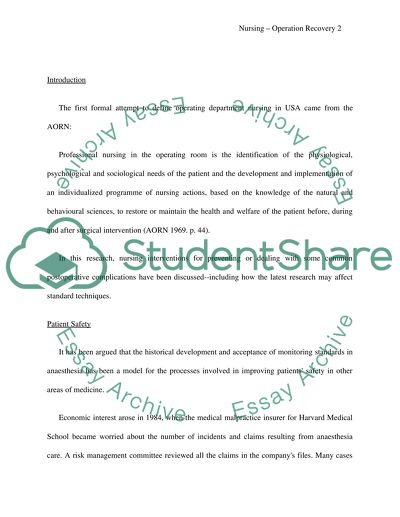Cite this document
(“Nursing in the theatre recovery room Essay Example | Topics and Well Written Essays - 3000 words”, n.d.)
Nursing in the theatre recovery room Essay Example | Topics and Well Written Essays - 3000 words. Retrieved from https://studentshare.org/health-sciences-medicine/1514200-nursing-in-the-theatre-recovery-room
Nursing in the theatre recovery room Essay Example | Topics and Well Written Essays - 3000 words. Retrieved from https://studentshare.org/health-sciences-medicine/1514200-nursing-in-the-theatre-recovery-room
(Nursing in the Theatre Recovery Room Essay Example | Topics and Well Written Essays - 3000 Words)
Nursing in the Theatre Recovery Room Essay Example | Topics and Well Written Essays - 3000 Words. https://studentshare.org/health-sciences-medicine/1514200-nursing-in-the-theatre-recovery-room.
Nursing in the Theatre Recovery Room Essay Example | Topics and Well Written Essays - 3000 Words. https://studentshare.org/health-sciences-medicine/1514200-nursing-in-the-theatre-recovery-room.
“Nursing in the Theatre Recovery Room Essay Example | Topics and Well Written Essays - 3000 Words”, n.d. https://studentshare.org/health-sciences-medicine/1514200-nursing-in-the-theatre-recovery-room.


